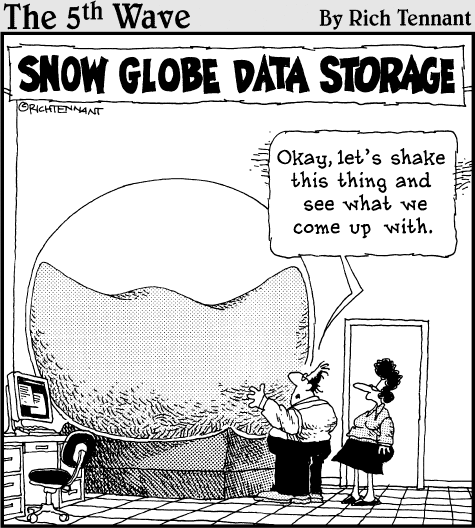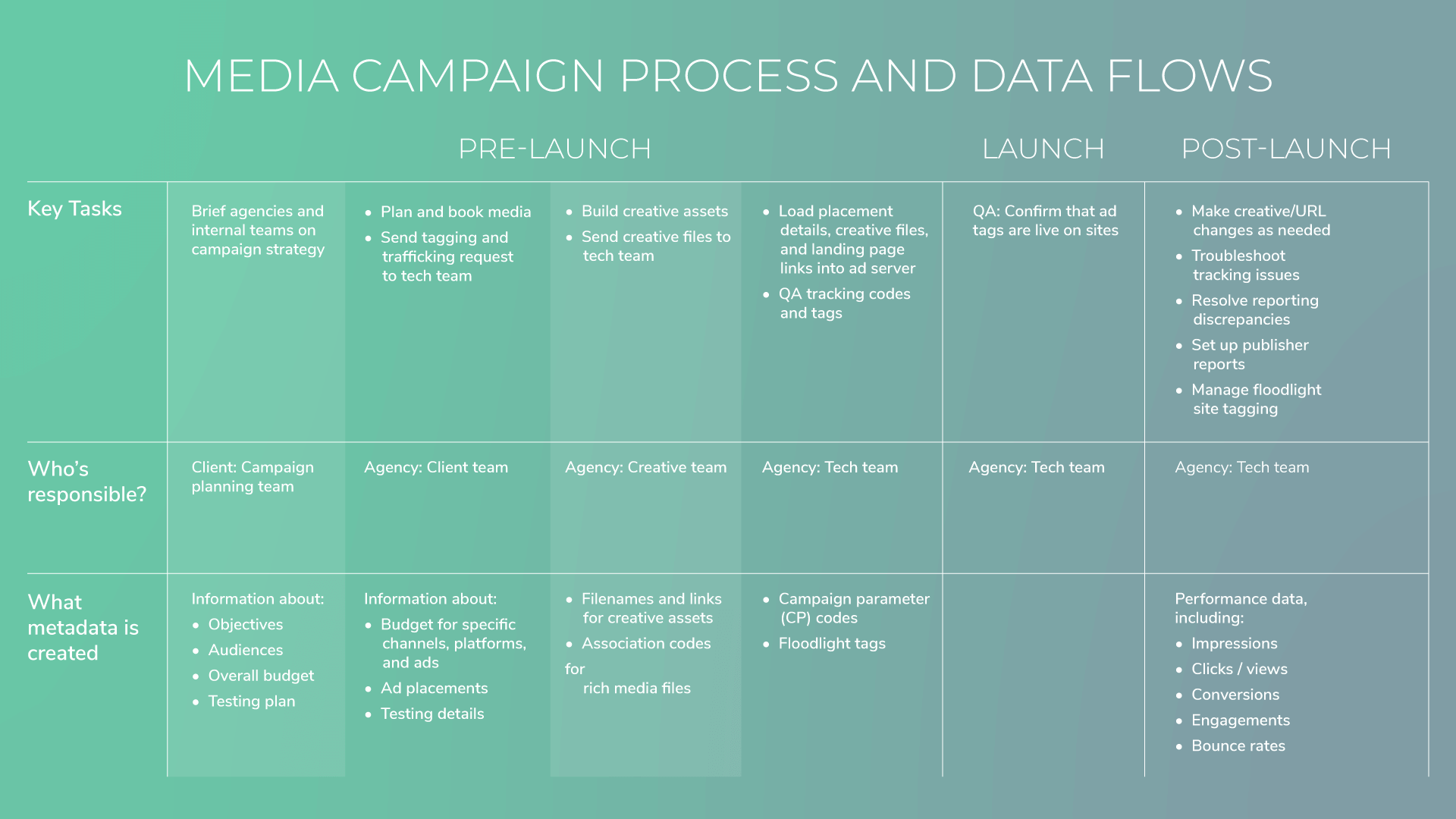Why Automated Data Governance is the Missing Link in Your Media Tracking Process
![]()
When I talk with people who run or report on digital media campaigns for major brands, there’s a common refrain from the client side: ‘We don’t have enough visibility into campaign performance.’ As brands receive pressure to account for their media spend, they have to grapple with the realization that their campaign data is too spotty and inconsistent to give them the insight they need.
Everybody’s been talking about data-driven marketing for years. Companies have invested in sophisticated web analytics tools and business intelligence systems. They’ve hired data scientists and MBAs to build multi-touch attribution models that are meant to help optimize the marketing mix. And yet at the end of the day, most companies are only effectively tracking 40 to 60 percent of their media spend.
It’s mostly a data governance problem: The people who create the tracking codes are using different labels for categories, campaign names, and media channels. And they’re storing those codes, along with other metadata related to the campaign, in disparate sources — often in spreadsheets that aren’t available to the broader team.
When I talk to people on the agency side, they tell me they’re feeling more pressure than ever before to deliver detailed and accurate performance data to clients. When tracking codes get set up incorrectly and cause gaps in the metadata — which happens when you rely on a manual QA process — the clients often refuse to pay for the ad impressions that didn’t get tracked.
If you don’t get tracking, you can’t knock on a consumer’s door and ask them to look at an ad again. The money’s gone at that point. And if you’re running media for a major brand, it could be in the magnitude of hundreds of thousands of dollars a day.
Sure, you need a data warehouse. But getting your data into one place solves only half the problem.

Pretty much every major brand is building or has already built, some form of a data warehouse. Privacy concerns are part of what’s driving that trend — especially in the wake of the General Data Protection Regulation that went into effect last year in Europe. But I think an even bigger driver is the sense most companies have that their data could be working a lot harder for them.
Given the pressure brands feel to account for how they manage their marketing budgets and customer data, brands are taking back some of the ownership of the data relating to their media campaigns. They’re saying to the agencies: We know you have all this interesting information that we never get to see, which has context around the campaign. We want to take ownership of that and be able to share it with our teams internally.
The brands try to centralize their campaign data and house it in a single place, such that it can be shared, validated, and managed across a large organization. They want their web analytics team, their BI team, and their internal marketing teams to have access to data that’s now sitting in a spreadsheet on someone’s machine — or on the devices of several people managing channels — over at the agency.
And here’s the most challenging part of that ask: they want a data format that will make sense to someone who’s looking for cross-channel insights.
You don’t need more data. You need clean data in a consistent format.
This Media Campaign Process and Data Flows chart below illustrates one of the reasons media tracking is so complicated. In this model, four teams — one on the client-side and three on the agency side — are driving different stages of the campaign planning and execution process.
The reality is more nuanced. For example, the Campaign Planning team gets input from several other internal groups. The Creative Team may represent a different agency from the one buying and executing the media placements. There may be an in-house creative team in the mix, alongside one or more external creative teams. An internal Media Planning team might be booking the media, and an internal Ad Ops team might be managing the execution.
Even though responsibilities may differ between brands, the process is probably similar to the one portrayed in the chart. At each step, different teams are generating information about the campaign. Some of that information gets attached to the media tracking codes, and some don’t. Many companies have multiple agencies running media for different channels, regions, and product groups, resulting in an infinite variety of tracking code formats.
Even if you could ensure full metadata capture from disparate systems and spreadsheets in a data warehouse, the data won’t mean anything to analytics teams. Analysts won’t be able to connect those data points unless the tracking codes and campaign objects are labeled consistently. That means you need a shared taxonomy — including general naming conventions as well as detailed guidelines for specific campaigns — and a water-tight process for ensuring everyone follows it.
In other words, you need to put in place governed processes for creating and managing your media tracking codes. You need to automate key parts of those processes. And you need to apply them throughout your media ecosystem, including your agency partners.
To learn how to get started, download our eBook, “Stop Fixing Your Media Analytics: Keys to Implementing Automated Data Governance.”




